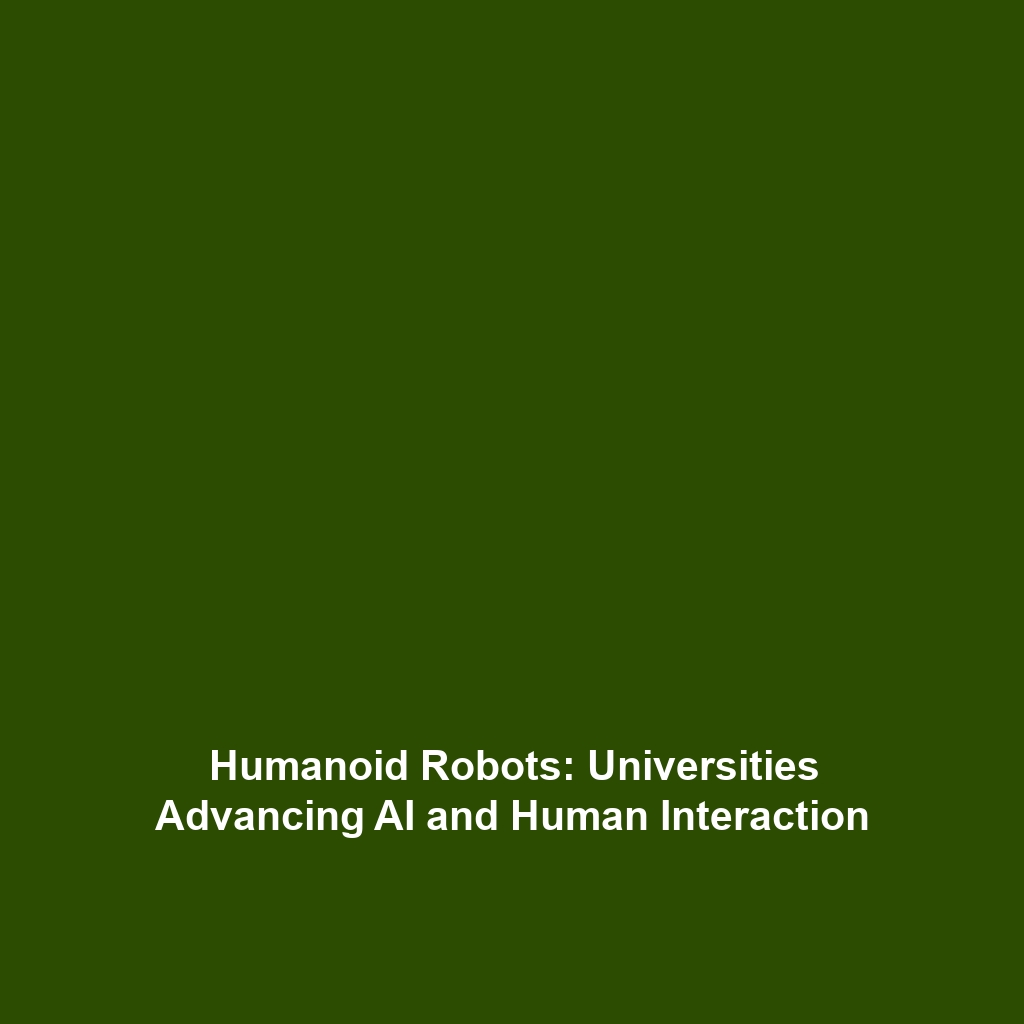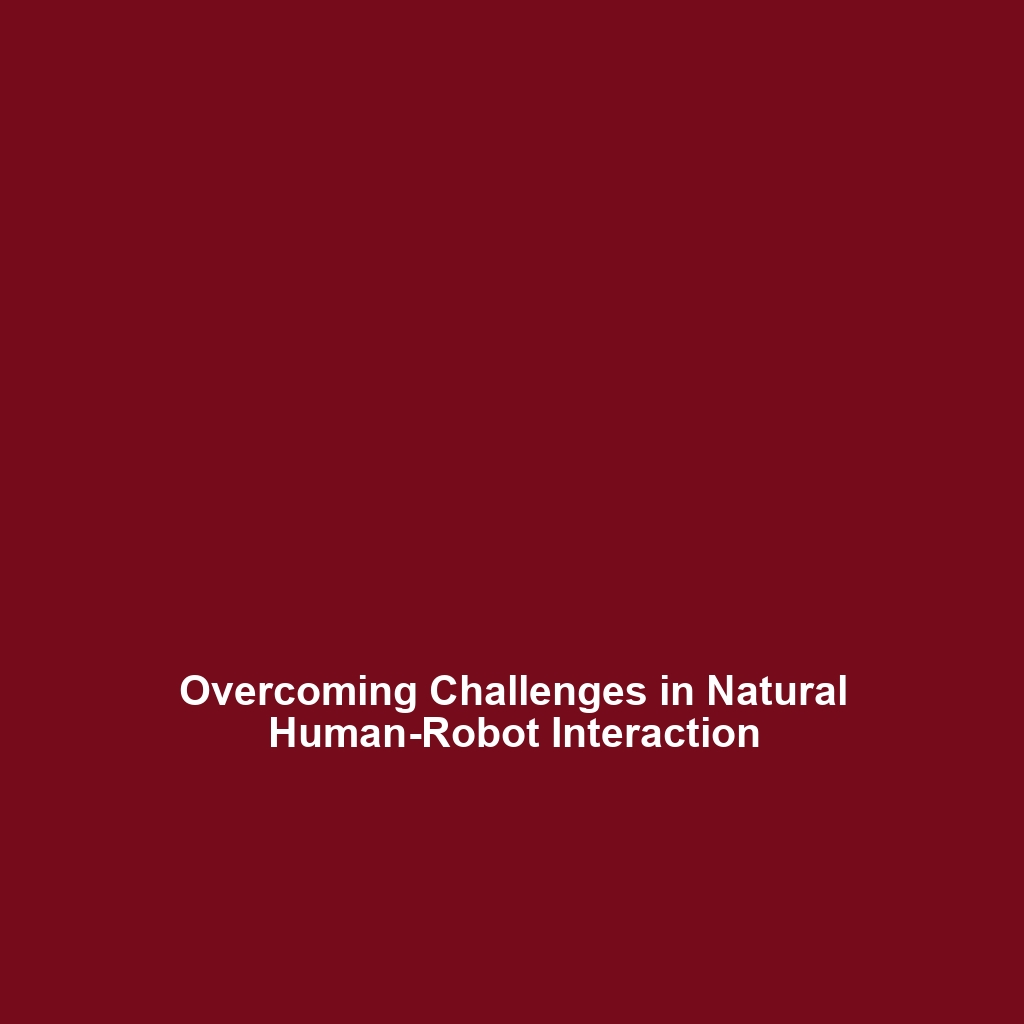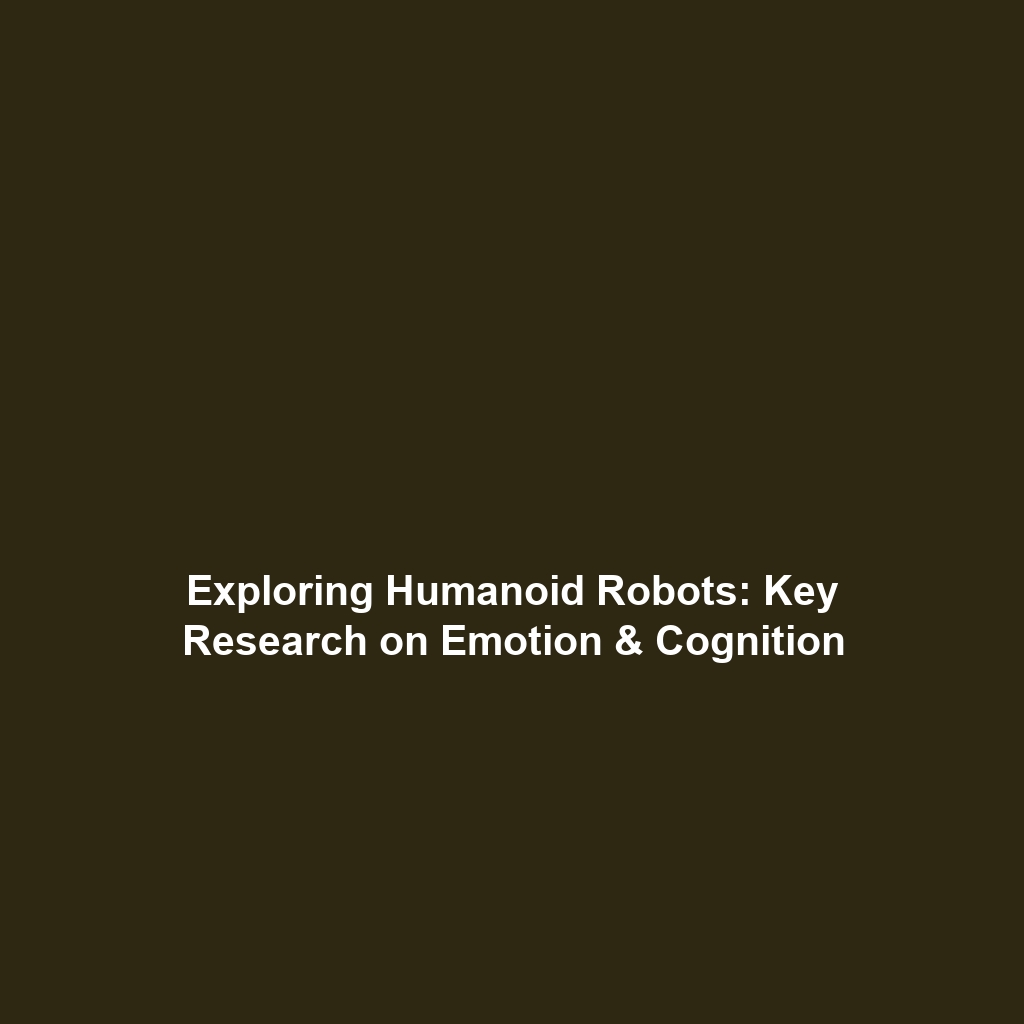The Role of AI-Driven Natural Language Processing in Humanoid Robots
Introduction
The integration of AI-driven natural language processing (NLP) into humanoid robots marks a significant advancement in the field of robotics. This technology allows these robots to engage in meaningful, human-like conversations, thereby enhancing interaction capabilities. As humanoid robots become increasingly integrated into everyday life, the significance of advanced communication protocols cannot be overstated. This article explores how NLP influences the development and functionality of humanoid robots, shaping their ability to deliver value in various contexts.
Key Concepts
Natural Language Processing Defined
Natural language processing is a field of AI that focuses on the interaction between computers and humans through natural language. This involves enabling computers to understand, interpret, and generate human language in a meaningful way. The application of NLP in humanoid robots aids in decoding human emotions and intentions, which is essential for realistic conversation.
Significance in Humanoid Robots
Humanoid robots equipped with NLP can respond contextually to user inputs, making them more interactive and adaptable. This enhances their usability in sectors such as healthcare, education, and customer service. Understanding the context and nuances of human language is crucial for creating effective responses, leading to more engaging and productive interactions.
Applications and Real-World Uses
The applications of AI-driven natural language processing in humanoid robots are vast and growing:
- Customer Service: Robots can assist in customer inquiries, providing personalized support and enhancing customer experience.
- Healthcare: Humanoid robots are used in hospitals to offer companionship and assist patients with their queries.
- Education: Educational robots can engage students in conversation, making learning interactive and enjoyable.
- Entertainment: Robots can hold conversations with users, providing an engaging experience in gaming and storytelling.
Current Challenges
Despite the advancements, there are several challenges in the implementation of AI-driven natural language processing in humanoid robots:
- Insufficient Context Understanding: Many robots struggle with understanding complex human contexts and humor.
- Emotion Recognition: Accurately interpreting human emotions remains a significant challenge.
- Privacy Concerns: The data used for training NLP models can lead to privacy issues, especially in sensitive environments.
- Language Limitations: Most systems are limited to specific languages and dialects, hindering global usability.
Future Research and Innovations
As technology evolves, so too do the potentials for NLP in humanoid robots:
- Real-Time Translation: Future innovations may lead to robots being able to converse in multiple languages seamlessly.
- Enhanced Emotion Detection: Breakthroughs in emotion detection technology will enable robots to understand and react to human feelings more accurately.
- Adaptive Learning Mechanisms: Future NLP models may include machine learning capabilities that allow robots to learn from interactions and improve over time.
- Better Contextual Awareness: Research focusing on context-based learning can provide robots with improved conversational abilities.
Conclusion
AI-driven natural language processing is reshaping the landscape of humanoid robots, enabling them to engage in more meaningful and productive conversations. The integration of this technology not only enhances human-robot interaction but also opens doors to a myriad of applications in various fields. As research continues, the future holds promising innovations that may redefine the conversational abilities of robotic entities. For further reading on the advancements in robotics and AI, explore our related articles.









